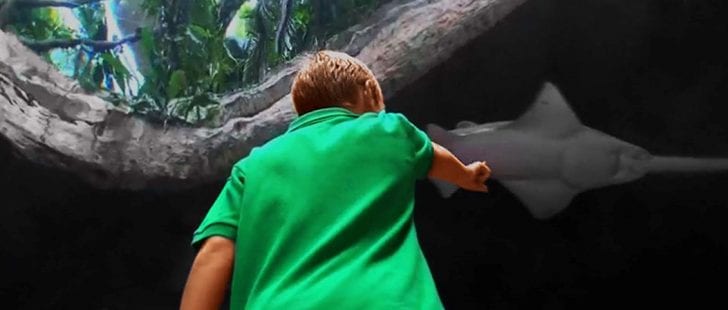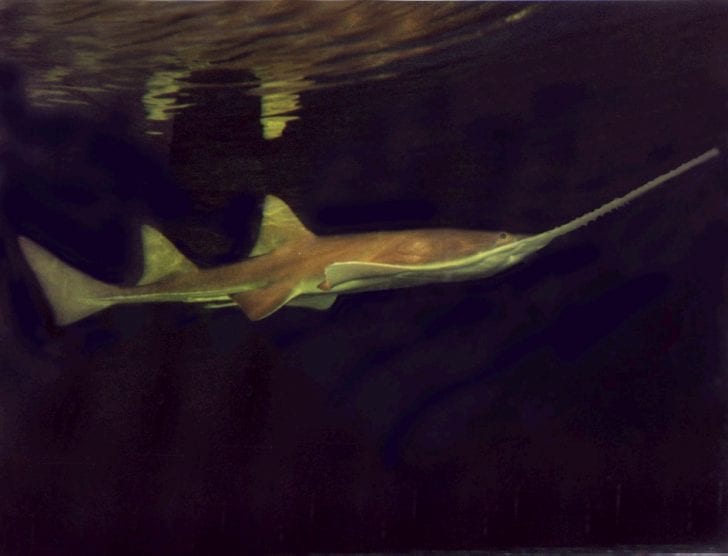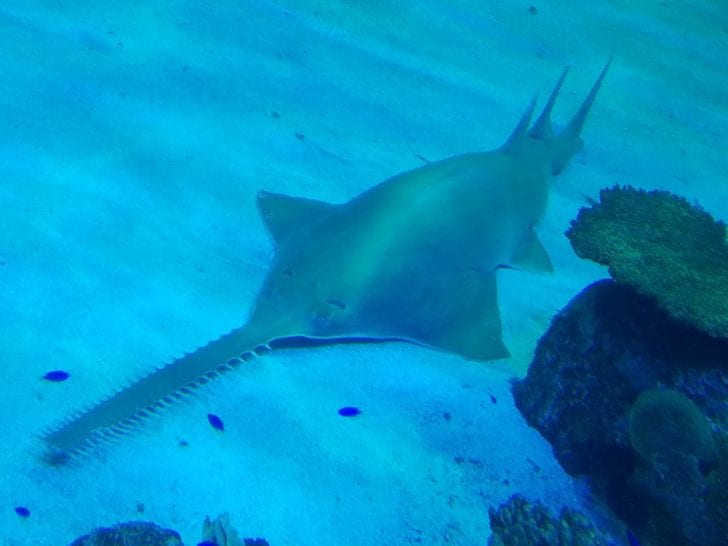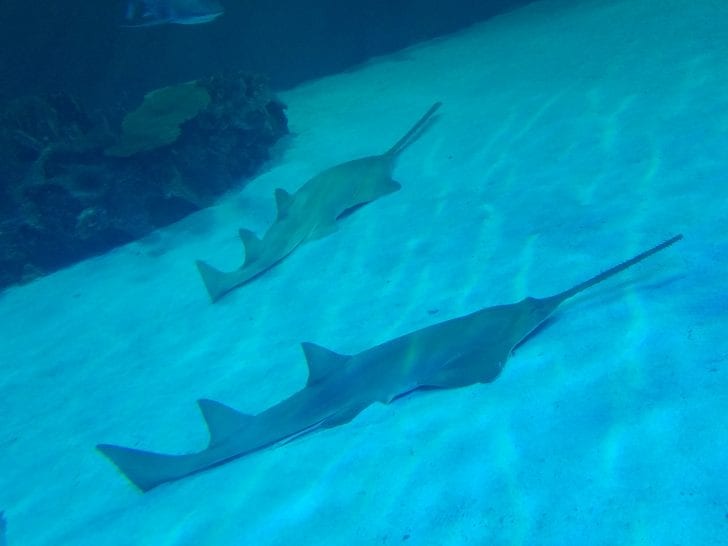by Tonya Wiley, Havenworth Coastal Conservation
To See a Sawfish in Public Aquariums: Making Conservation Connections
by guest authors Paula Carlson, Stacia White, and Alan Henningsen
Since the early 1930’s when the Shedd Aquarium in Chicago displayed a smalltooth sawfish for the first time, public aquariums have created connections between people and these incredibly unique, and now critically endangered, rays. Over the years, millions of visitors to zoos and aquariums around the world have enjoyed that experience, and for many it is the only opportunity they will ever have to see a living sawfish. Because of the decline of sawfish populations worldwide, public aquariums are in a unique position to build on these connections and help to create conservation solutions. Sawfish conservation requires a multi-faceted approach to be successful, and the public aquarium community shares common concerns with researchers, field biologists, and conservation and management agencies in terms of the need for continued and increased collaboration between stakeholders at all levels.

Many of the public aquariums in the United States are members of the Association of Zoos and Aquariums (AZA), which is a non-profit organization dedicated to the advancement of accredited zoos and aquariums in the areas of animal care, husbandry, conservation, education, science, and recreation. With more than 183 million visitors to accredited institutions each year, AZA’s focus on connecting people and animals provides a critical link to helping animals in their native habitats. For many years, members of the AZA Marine Fishes Taxon Advisory Group have worked with governmental and non-governmental conservation agencies to find solutions to protect sawfish in their natural environment. In addition to their role in education, research, and conservation, AZA member zoos and aquariums also play an important role in the preservation of species through population management programs and AZA Species Survival Plans® (SSP). The mission of an SSP is to cooperatively manage specific, and typically threatened or endangered, species populations within AZA-accredited zoos and aquariums, certified related facilities, and approved non- member participants.

Smalltooth sawfish (Pristis pectinata), largetooth sawfish (Pristis pristis), and green sawfish (Pristis zijsron) are the three species most displayed in aquarium collections.

Tonya Wiley, President / Tonya@havenworth.org
941-201-2685 / www.havenworth.org
Tax-deductible donations to help us continue our mission to promote the sustainable use and conservation of marine resources through research, outreach, and education can be made at https://havenworth.wedid.it/



